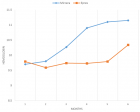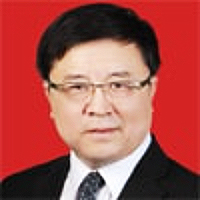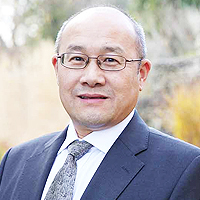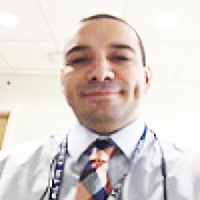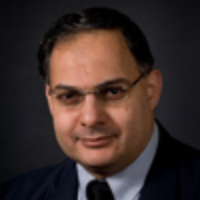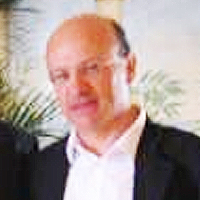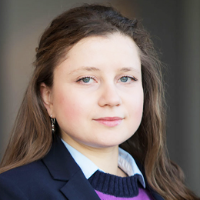Table of Contents
Perceptive and Rehabilitative Muscle Recruitment Facilitation Secondary to the use of a Dynamic and Asymmetric Spine Brace in the treatment of Adolescent Idiopathic Scoliosis (AIS)
Published on: 4th June, 2018
OCLC Number/Unique Identifier: 7893705319
Background: Supporting our adolescent people in realizing his/her self ability to reorganize and to establish a cross-linked paraspinal muscle control can be considered the most effective approach for muscle rehabilitation in adolescents affected by “AIS. Aim of this study was to evaluate the SEMG activity of paraspinal erector muscles by using an innovative dynamic and asymmetric spine brace called “BRIXIA” in the conservative treatment of patients affected by adolescent idiopathic scoliosis (AIS).
Methods: Five patients affected by adolescent idiopathic scoliosis were recruited for the aim of this study in line with an informed consent and simple inclusion criteria. Each patient underwent a first task-specific evaluation at time T0 and T1 and a secondary experimental course at time T2, T3 and T4. After a first postural and total spine X-ray evaluation, recruited patients began to use our innovative spine brace called BRIXIA (time T0 and T1). During the second experimental phase, a SEMG bilateral activity of the trunk large rhomboid, the latissimus dorsi and the quadratus lumborum was investigated without spine brace, by using a common Chenêau brace and afterwards the dynamic BRIXIA spine brace, with the acquisition of the so-called RMS SEMG Ratio value. The SEMG measurements were acquired in six study conditions: a. SiRP=Sitting Resting Position; b. SiRCP=Sitting Recruiting Position with a so-called pneumothorax thrust; c. StRP = Standing Resting Position; d. StRCP = Standing Recruiting Position; e. BA = Anterior Trunk Bending; f. BARC = Anterior Trunk Recruiting Bending. At the end of this SEMG evaluation, each patient received (for a daily use around 18 hours per day) the final version of the BRXIA spine brace and began an individualized educational postural rehabilitative treatment course (time T2). At time T3 and T4 a second and third SEMG assessment was made without using a spine brace and by using BRIXIA, with each patient evaluated in a resting condition and realizing a self-made cross-linked postural correction. Finally, a functional, radiographic and postural evaluation were made to define and quantify an amelioration and modification of patients’ postural attitude at the end of a combined rehabilitative and device supported treatment.
Findings: A comparative analysis of our SEMG data acquired in six study conditions showed different trends in all patients recruited proceeding from time T2 to time T5. Particularly, we observed at time T2 an homogeneous grade of paraxial muscle recruitment acquisition, expressed by the RMSsEMG ratio index, without using spine brace (53,3%) and by using Chêneau and BRIXIA brace (46,7%); specifically, a 57,14% of our patients used BRIXIA brace and a 42,86% Chêneau brace; the most homogeneous response was acquired in BA study condition; a symmetric paraxial muscle recruitment acquisition without using spine brace was observed in an 80% of our patients; the most grade of not homogeneous muscle activity response was observed in SiRP and StRCP study conditions; at time T3, an homogeneous grade of symmetric paraxial muscle recruitment activity, expressed by the RMSsEMG ratio index, was observed by using BRIXIA brace (56,7%); all patients recruited (100%) showed in SiRCP study condition the most homogeneous and symmetric paraxial muscle recruitment by using BRIXIA brace; in SiRP and StRCP study condition this trend was observed in an 80% of our patients with a reversion of this trend in StRP and BRAC conditions; at time T4, an immodification of the grade of symmetric paraxial muscle recruitment acquisition, expressed by the RMSsEMG ratio index, was observed in a 56,7% of patients who were using BRIXIA brace; all patients recruited (100%) showed in BARC study condition the most homogeneous and symmetric paraxial muscle recruitment by using BRIXIA brace, while in SiRP condition this trend was observed in an 80% of our patients. In a comparative and time-related analysis between our clinical and RMS data, Cobb angle trend showed a statistical significant correlation with RMS data, acquired at time T4 in BARC condition and without BRIXIA brace, and similarly with RMS data acquired at time T4 with BRIXIA brace. In line with the Visual Postural Analysis trend, our rehabilitative model showed a sensible capacity to modify patient’s individual sense of posturality, to increase the acquisition of cross-linked self-correction strategies and to induce a progressive rebalancing between the anterior and posterior kinetic muscle chains recruitment. These rehabilitative principles were perfectly in line with the perceptive and pro-rehabilitative value of our innovative BRIXIA brace.
Interpretation: This study will underline the professional attitude of all physiotherapists to use in a critical and task-specific way our dynamic and asymmetric spine orthesis called “BRIXIA”. This innovative brace allows to achieve: a. an individualized peripheral neuromodulation of patient’s sense of postural attitude (peripheral perceptive re-modulation of paraxial muscle recruitment); b. a neurorehabilitative re-learning device of postural self-correction strategies (peripheral neurosensitive facilitation of a dynamic process of motor corticalization device-related); c. an increase of patient’s quality of life in term of appearance and relational sense (life-impact device-related).
Physical benefits of (Salah) prayer - Strengthen the faith & fitness
Published on: 29th May, 2018
OCLC Number/Unique Identifier: 7756754647
The Physical benefits of Islamic prayer on the human body are discussed in this article. The act of prayer requires the worshiper to move through several distinct bodily postures while reciting a specific supplication. Salah involves a certain level of physical activity which includes standing, bowing prostration and sitting consecutively. Each position involves the movement of different parts of the human body in ways that Some muscles contract isometrically (same length) and some contract in approximation or isotonically (same tension). The prayer movements would enhance flexibility and general muscular fitness. This results in moderate physical exercise particularly to the large muscle group and encourage health and wellbeing. Besides being an excellent form of exercise, physical activity breaks the monotony of chores.

HSPI: We're glad you're here. Please click "create a new Query" if you are a new visitor to our website and need further information from us.
If you are already a member of our network and need to keep track of any developments regarding a question you have already submitted, click "take me to my Query."







